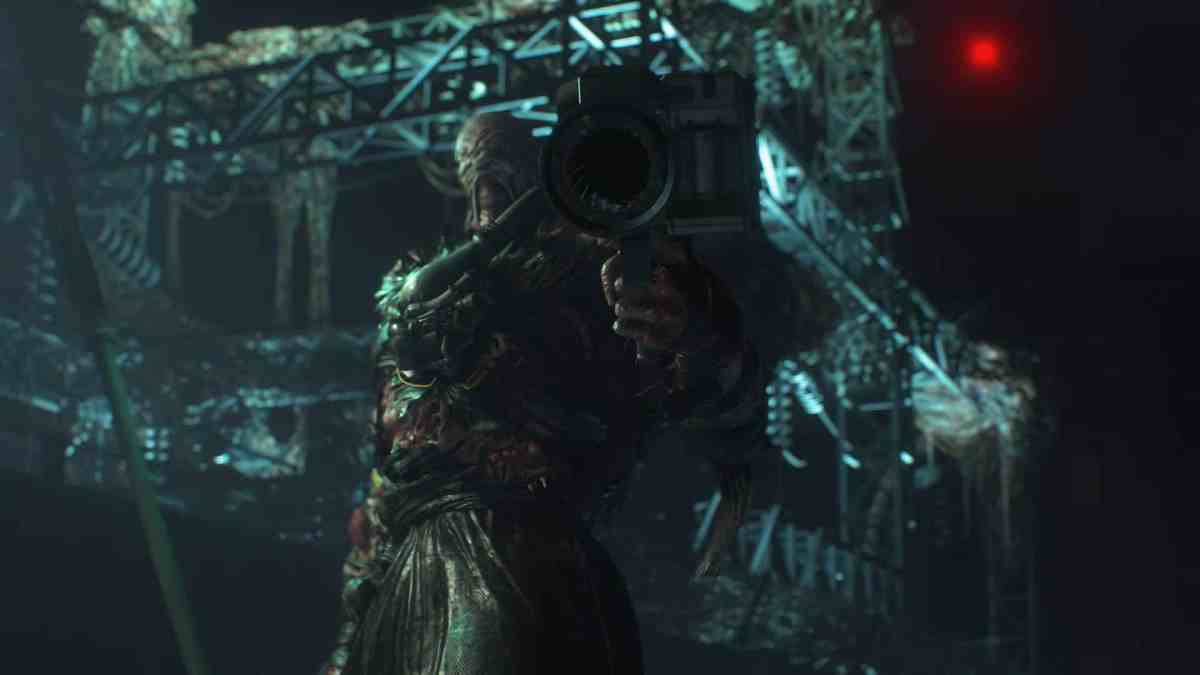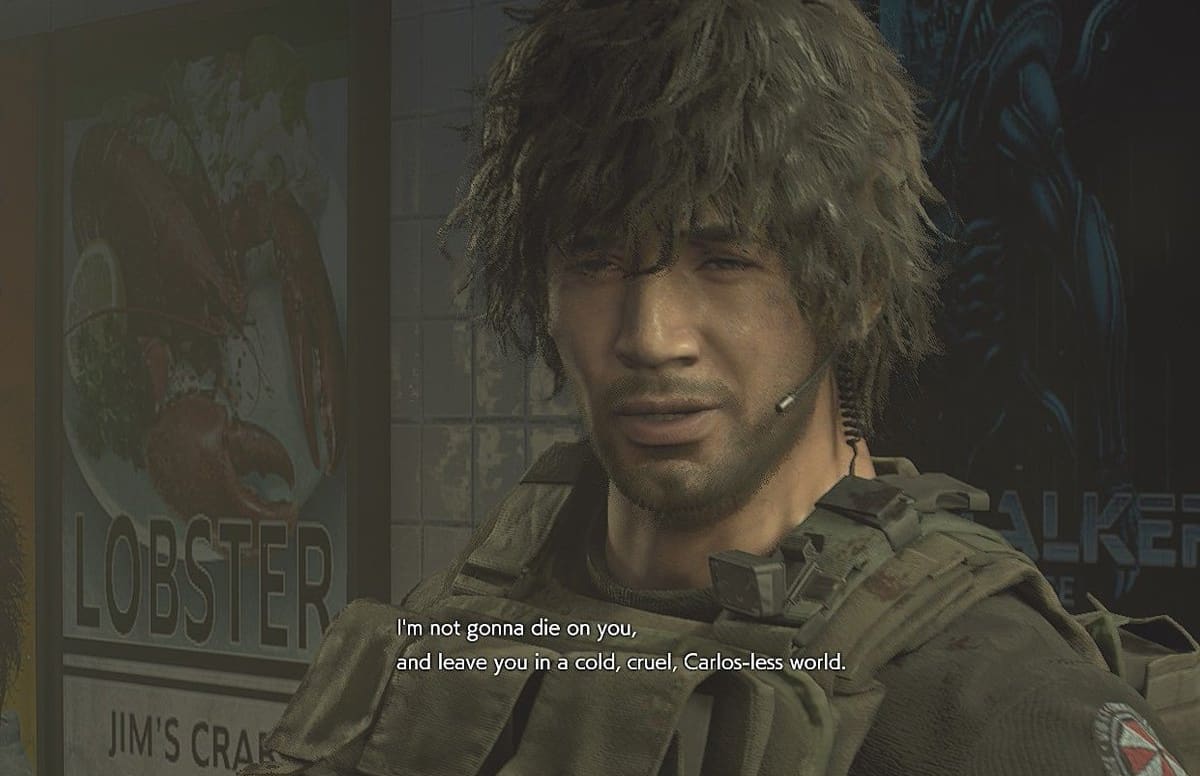Capcom’s always been willing to explore bold revivals of its IP, possibly none more successful than 2019’s Resident Evil 2, a remake so popular it warranted Game of the Year nominations. Yet its 2020 follow-up Resident Evil 3 ended up more divisively received than its predecessor, neither a hit nor an outright miss. If you’ve been a longtime reader, then you know by now that sort of reception is like a siren song to me — but Resident Evil 3 really is something special.
Granted, the majority of the criticisms levied at the Resident Evil 3 remake are absolutely fair. The dodge system is finicky. Infinite knife use and far fewer grenades mean that grapples are tedious rather than tactical. Jill and Carlos’ journey is more linear than some chapters in Resident Evil 6. Your main opponent Nemesis is such an apathetic threat that it actually feels warranted that he no longer receives subtitle status. And it’s easily one of the shortest Resident Evil games, let alone AAA survival horror titles.
While this game is absolutely Resident Evil 3, that’s more in the sense of its being a sequel to the preceding remake, making even bolder choices to reinvent itself. Infinite knife use and fewer grenades means you hold onto ammo preciously, opting to cripple zombies even more so that you can line them up for a quick stab to clear the way. While dodging is oddly timed for standard enemies, it’s clearly built for dealing with Nemesis. Even though Nemesis is ironically the easiest enemy in the game by far, most first-time players might not realize that going in, especially if this is their first Resident Evil game. And the longer I played, the more I realized how precisely tuned Resident Evil 3 is as an introduction to the franchise.

Yes, Resident Evil 3 can, for first-time players, literally be finished in under five hours, particularly if you play on Assisted mode. But that’s by design, and it works. As I was playing, I noticed just how high the percentages were for story achievement completion. Normally an ideal completion rate for a game is somewhere around 40-50% of players seeing the end credits. Either bloat or difficulty typically stops the rest. Yet Resident Evil 3 has an over 70% completion rate according to Steam global achievements. Less than a fourth of the entire playerbase stopped playing. That’s an incredible mark of success, and it all clicks the second you think about how Resident Evil 3 is designed.
Resident Evil 3 is a precisely guided tour of what makes great survival horror. All sorts of complicated systems and cumbersome elements are either streamlined or made more intuitive — from exploration to combat. Though the streets of Raccoon City are narrower than the police department Leon and Claire were navigating last time, they’re still packed with secret and side objectives. The only difference is that it’s much easier to keep track of a handful of clues.
Enemies and hazards are positioned to either be evaded or dealt with through swifter means than repeated headshots — whether that’s with explosive barrels, dancing around furniture, or blasting knee caps. Several traps, both real and metaphorical, can be evaded entirely through being observant. With generous checkpoints spread across each brief chapter, failure is a lesson rather than a punishment. You’ll typically get a chance to start again with your misspent resources restored, allowing you to charge in again or take a different approach.

This emphasis on learning through trial and error would grow more tiresome with a protracted experience. However, with new challenges and resources dropped in every few minutes, bolstered by a plot that constantly moves forward, you never really have time for anything to grow old. The same lessons apply as each new chapter expands upon them, deepening the player’s knowledge while retaining a crucial sense of novelty. Every victory feels like genuine progress, creating a — dare I say it — FromSoftware-esque learning curve at a micro scale. Classic survival horror games have always been close cousins to the Souls series in this respect, and Resident Evil 3 captures perfectly why this approach works so well.
That essence of giving it another go and mastering the core of the game transcends a single playthrough. In addition to the standard tricks and foreknowledge that makes a return visit easier, there are numerous unlocks both in the campaign and through replays that incentivize returning. You can earn stat enhancements and more powerful weapons. Rather than a crutch, these are only given out after you’ve played through once and understand the core experience for what it is. These are rewards you earn by playing the game better and better, transforming what was a brief horror game into an action-thriller you can spice up on repeat runs.
In the event players do need a hand, Assist Mode provides this while explicitly retaining the game’s essence. It offers a standard assault rifle at the start of your playthrough, as well as a more generous aim-assist, and enemies don’t take quite as many bullets to down. These modifiers are like the boon of your unbreakable knife in lieu of Resident Evil 2’s breakable alternatives — a utility, but not guaranteeing success in any situation. You still have to play Resident Evil 3 like a horror game; you’re just given a bit more of an edge that can make all the difference for those getting started.

Most crucially, by not being overloaded with filler, Resident Evil 3 thoroughly encourages you to be impulsive in the moment. When you realize how quickly the game is breezing along and are deeply engrossed, you instinctively start to try things without the fear of wasting hours of your time with a soft lock resulting from an ill-timed choice. If every section is meaningful, then there’s no incentive to hoard everything. It’s in this respect that it surprises even a survival horror veteran like myself, getting me to more freely expend crafting materials or use power ammo where I might have saved them all and missed out on using them in certain areas.
Of course, Resident Evil 3’s creative choices are polarizing, but when you look at them as a whole, the resulting experience makes sense. It’s just not quite what one expects from AAA games these days: a complete package that stays precisely focused on what it wants to be and wants nothing more than for you to experience all it has to offer without wasting your time. Which, ya know, is definitely working for me as I feel tempted to plot a second playthrough.
Though it’s not the game players expected, I just can’t call Resident Evil 3 bad by any measure. It’s odd and remarkably focused on new players, but never unpleasant. While no one would argue it’s better than Resident Evil 2, I can’t help but find myself wanting to recommend taking the reverse order and diving into Resident Evil 2 after playing through Resident Evil 3. The timeline of events is even set in that order, foreshadowing later story beats Leon and Claire run across in their journeys. It turns out being smaller is the best thing that could’ve happened to Resident Evil 3! Or I’m just seeing S.T.A.R.S. — I’ll let you be the judge of that.
